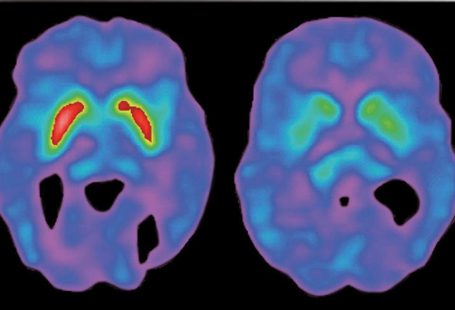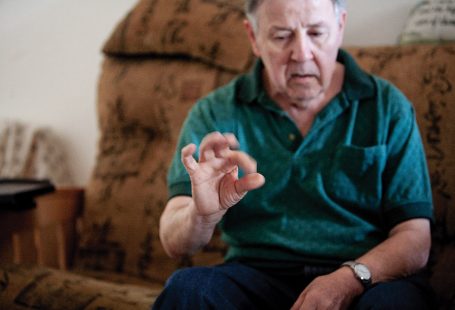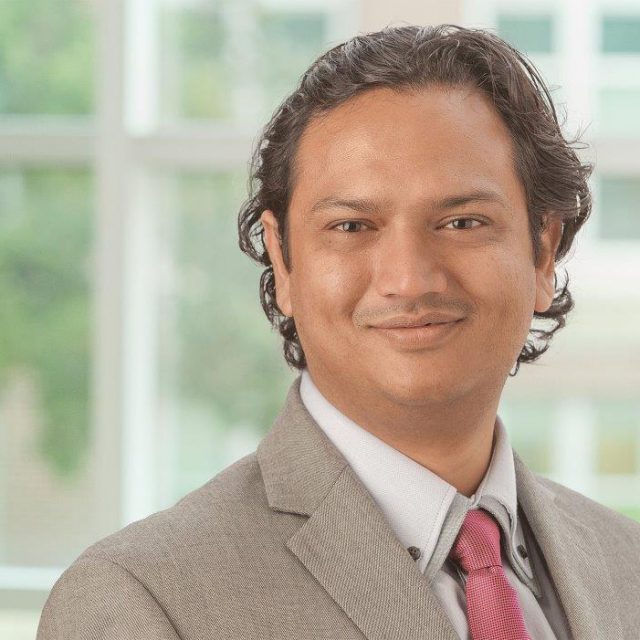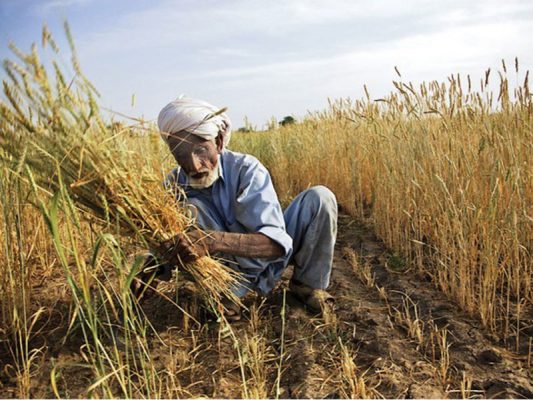
Patient Beliefs, Culture and Experiences from a Developing country
Danish Bhatti MD
University of Nebraska Medical Center (UNMC) Movement Disorder team partnered with several institutions in Pakistan to conduct an exploratory prospective multi center, study on characteristics of Parkinson’s disease (PD) in Pakistan with focus on experiences cultures beliefs and risk factors from a developing country. These institutions included University College of Pharmacy at University of Punjab, Neurology departments of Hamdard University Hospital, Liaqat University Medical and Health Sciences, Shifa International Hospital, Pakistan Atomic Energy Commission General Hospital and King Edwards medical university of Pakistan.
 Many different neurologists were part of this large comprehensive collaborative that collected data of more than 200 points of information on nearly 100 patients amounting to more than 20000 points of information. This data was analyzed to find various important differences in Parkinson’s disease characteristics and behaviors, cultures and beliefs. The data was summarized and presented at the American Academy of Neurology Annual meeting in 2018 in Los Angeles and is being put together as a manuscript for publication. Some very interesting findings were noted and is being shared here.
Many different neurologists were part of this large comprehensive collaborative that collected data of more than 200 points of information on nearly 100 patients amounting to more than 20000 points of information. This data was analyzed to find various important differences in Parkinson’s disease characteristics and behaviors, cultures and beliefs. The data was summarized and presented at the American Academy of Neurology Annual meeting in 2018 in Los Angeles and is being put together as a manuscript for publication. Some very interesting findings were noted and is being shared here.
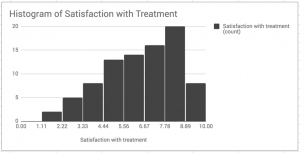 Most of the patients were from large central state of the country ‘Punjab’ which is a big agricultural state right in the middle and mostly a flat land and also the bread and basket of the country thus being very similar in characteristic to the state of Nebraska. We were able to collect information on 96 patients with a mean age of 60 years and 2:1 male to female ratio which is very similar to the expected distribution of PD. The patients had an average disease duration of five years. We found interestingly that patients were diagnosed on average early, with the time to diagnosis from presenting to a physician of only six months. This is in contrast to findings noted in our personal experiences in Nebraska where sometimes a diagnosis can take years. One of the reasons for this difference may be a bias that the information is being collected by the patients presenting to a tertiary care center. It’s like collecting data from patients presenting University of Nebraska and thus the outcome might be very different compared to general population. However, one possible explanation of this short diagnosis time could be that the patients are seeing multiple physician rapidly. A patient in Pakistan in general pursue another physician’s opinion very quickly if they are not satisfied with the firsts. Patients on average in this cohort have seen nearly four physician in the last five years with a range going up to 15 different physicians consultations.
Most of the patients were from large central state of the country ‘Punjab’ which is a big agricultural state right in the middle and mostly a flat land and also the bread and basket of the country thus being very similar in characteristic to the state of Nebraska. We were able to collect information on 96 patients with a mean age of 60 years and 2:1 male to female ratio which is very similar to the expected distribution of PD. The patients had an average disease duration of five years. We found interestingly that patients were diagnosed on average early, with the time to diagnosis from presenting to a physician of only six months. This is in contrast to findings noted in our personal experiences in Nebraska where sometimes a diagnosis can take years. One of the reasons for this difference may be a bias that the information is being collected by the patients presenting to a tertiary care center. It’s like collecting data from patients presenting University of Nebraska and thus the outcome might be very different compared to general population. However, one possible explanation of this short diagnosis time could be that the patients are seeing multiple physician rapidly. A patient in Pakistan in general pursue another physician’s opinion very quickly if they are not satisfied with the firsts. Patients on average in this cohort have seen nearly four physician in the last five years with a range going up to 15 different physicians consultations.
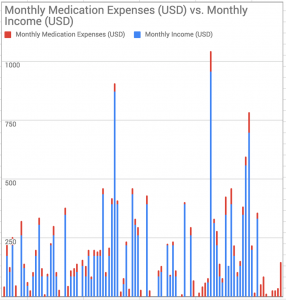 One of the aspects that we were interested in was the healthcare economics. Pakistan still does not have any significant medical insurance (3% or less) and thus patients are self-pay and bear cost of all medical expenses and medication. We found not surprisingly that the medication cost is a big burden on the patient population where on average 20 % or 1/5 of the income is being spent just on the monthly medication cost. A quarter of patients are spending more than a quarter of their household income on just the medication cost not including physician visits, procedures or hospitalization. This is on top of a very low average household income in this patient population of only $$255 dollars per month. We also noted that only 16 percent patients are working themselves so they have to rely on the income of someone else in the household.
One of the aspects that we were interested in was the healthcare economics. Pakistan still does not have any significant medical insurance (3% or less) and thus patients are self-pay and bear cost of all medical expenses and medication. We found not surprisingly that the medication cost is a big burden on the patient population where on average 20 % or 1/5 of the income is being spent just on the monthly medication cost. A quarter of patients are spending more than a quarter of their household income on just the medication cost not including physician visits, procedures or hospitalization. This is on top of a very low average household income in this patient population of only $$255 dollars per month. We also noted that only 16 percent patients are working themselves so they have to rely on the income of someone else in the household.
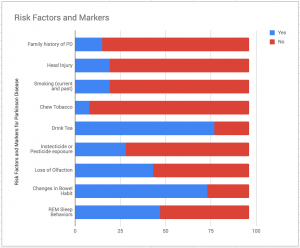
We looked at the culture, habit and beliefs of these patient population in the developing country and found that only 1/3 of the patients are exercising regularly, 1/5 of the patients are reading regularly, slightly more than 1/3 of the patients have tried over the counter supplements but most of them report a lack of any benefit. Majority of the patients (90%) are taking Levodopa (Sinemet) and most of them within five years are using more than two medications for PD on average. It was interesting to see the beliefs and taboos of these patient population. A big majority (90%) of these patients worry about their future, 70% admit public embarrassment and nearly half of them tried to conceal their disease. Although 2/3 of these patients have spouse support available, half of the patients feel that they are a burden on their caregiver and more than 1/3 of these patients report having problems with interpersonal relationships. We’ve found a strong belief in religion helps their disease such as prayers (80%). There was a strong reliance or trust in the physicians taking care of their patient in this population where. nearly 80% of the patients were the patients on average rated their trust level on the physician between 7-8 on a scale of 1-10 (10 being complete trust).

This was a very useful survey of characteristics of Parkinson’s patients management culture and belief in a developing country. We hope to pursue this line of evaluation further and even plan to consider a comparative study of similar data from state of Nebraska, comparing and contrasting similarities and differences between a developed nation and a developing country with similar occupational distribution.
